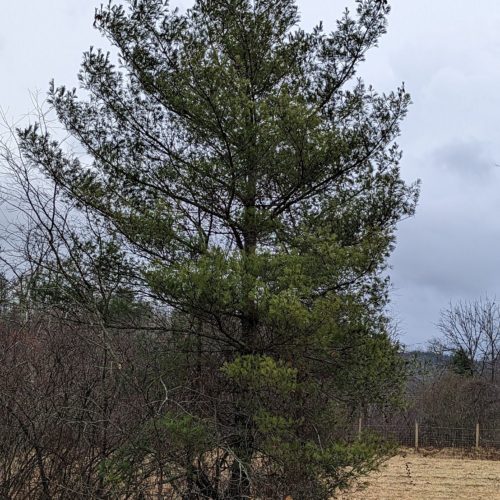Welcome to the first blog in our Joe’s Journal series from guest writer Joe Doccola, our Director of Research and Development, where he shares his more than twenty years of expertise, experience, and knowledge in the fields of arboriculture, forestry, and gardening. Keep checking in to see what information he has to share!
Days grow shorter, colder; trees and shrubs have grown bare, and the grasses and forbs have yellowed: it appeared to our ancient ancestors that the earth was dying. Only the evergreens seemed to remain alive and were the hope and promise of life returning again. It is no wonder that the evergreens were venerated as symbols of life from time immemorial.
How do evergreens and conifers survive long cold winters, especially where ground freezes and there is no soil moisture for roots to absorb? Conifers have a number of adaptations that help them survive such adverse conditions. Unlike many shade and flowering trees, they hold onto their foliage. That at first glance seems a bit of a liability when there is no soil moisture to keep the foliage hydrated. So, what are a few of the adaptations made by conifers? Conifers are gymnosperms that rely solely on tracheids to move water and dissolved minerals in the plant. Tiny, and only a few microns across, think of them as capillaries. From this anatomical perspective, conifers use much less water compared to most shade trees of similar size. How is this an advantage? Well, you can think of this group as the first conservationists, using water sparingly. The modifications to winter survival don’t stop there. The leaves, though retained year-round, are modified as well. Such modifications include being thin, waxy or scaley, adaptations to resist moisture loss. Arborvitae and Leland cypress (Chamaecyparis leylandii) for example have scale-like leaves, whereas pines, firs & spruces have narrow needle-like leaves.

The common name for Thuja occidentalis (arborvitae) literally means “tree of life”. There are a number of cultivars of arborvitae from which to choose. Examples include DeGroot’s Spire (narrow) and Techny (deep dark green foliage). However, deer love arborvitae. They will eschew rather than chew (oh, deer!), Green Giant Arborvitae (Thuja plicata x Standishii). If deer are a problem, go with Green Giant. Plant arborvitae in full sun, in moist, well-drained soil. A few may be planted as a specimen tree (DeGroot’s Spire), but most are an excellent choice for a border screen or tall hedge.

Pines carry their needles in bundles, called fascicles. They can have 2, 3 or 5 needles bundled together. White pine is a five-needled pine, whereas Austrian pine and Virginia pine have 2 needles per fascicle. In landscape plantings, pines have a fine-textured appearance.

White pine (Pinus strobus) is native to the northeast, extending down the Appalachians and westward surrounding the Great Lakes. It is a fast-growing dominant forest species. Plant in full sun, well-drained, slightly acidic to acidic soils. Use for naturalizing, as a specimen tree or tall hedge. Though it can be sheared, it will grow to 50 to 80 feet tall, so give it room!

Pines, spruce and fir trees have resinous sapwood. Resin is formed in the sapwood by specialized living cells (parenchyma) grouped to form a resin duct. In contrast, Eastern hemlock (Tsuga canadensis) has non-resinous sapwood (though it does have resin ducts in the bark). This forest tree is one on the few conifers that tolerates shade and low light conditions. Once referred to as the Redwood of the East, individual trees have been dated to 900 years! It prefers moist soils, rich in humus. It is a riparian species, growing in wetlands often near rivers and streams. Unlike spruce or fir, hemlock needles shatter when cut for greens. The greatest threat to this forest giant however, is a small, almost microscopic insect, the Hemlock Woolly Adelgid (HWA). Left to its own devices, HWA can kill a mature tree in as little as 5 to 7 years. Look for white woolly masses at the base of the needles that develop in winter. Treat small trees with foliar sprays of insecticidal soap, Azadirachtin or other labeled insecticide. Large trees can be protected by labeled systemics applied by stem injection, though these are best applied by a licensed applicator.
~ Signing off for now, Joe
